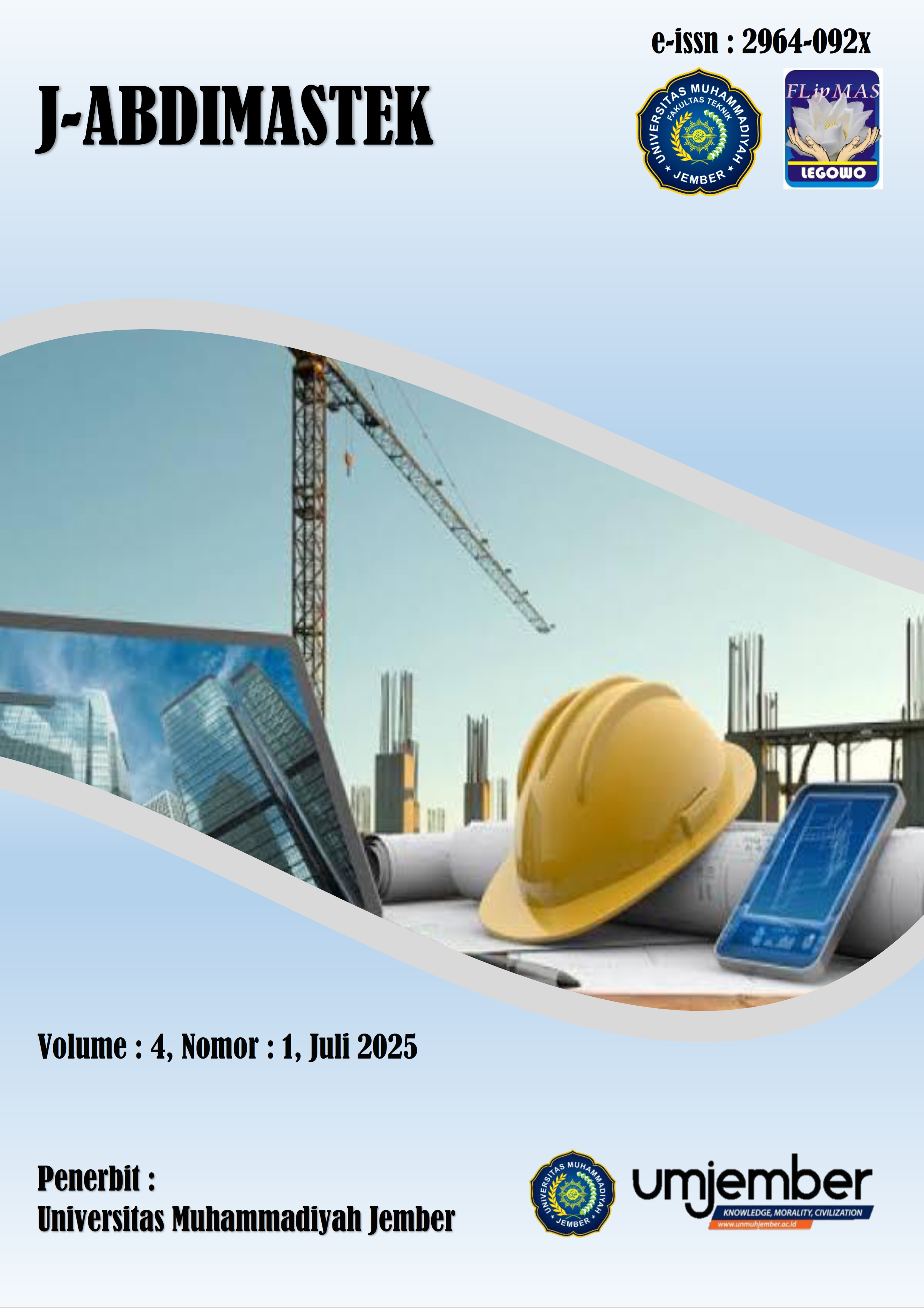Enhancing Business Operations through Technology: A Community-Driven Inventory System for Dymas Kulit Home-Based Leather Craft Business
DOI:
https://doi.org/10.32528/abdimastek.v4i1.3560Keywords:
Inventory Management System, Community Support, Information Technology, Operational Efficiency, MSMEAbstract
This community service project aimed to assist Toko Dymas Kulit, a home-based leather crafting business in Magetan, East Java, by developing and implementing a web-based inventory management system to replace its manual tracking process. The new system, built using PHP with the CodeIgniter framework and MySQL, was designed to improve the accuracy and efficiency of inventory management by automating tasks such as tracking stock movement and generating real-time reports. As a result, the store saw a reduction of over 50% in the time spent on inventory checks, allowing staff to focus on other essential business activities. User satisfaction was high, with a System Usability Scale (SUS) score of 73.3, reflecting the system's ease of use. This initiative not only solved operational challenges for Toko Dymas Kulit but also empowered its employees with new skills, offering a valuable model for other small businesses in the community to improve their operations through technology.
References
Aldi, F. (2022). Web-Based New Student Admission Information System Using Waterfall Method. Sinkron, 7(1), 111–119. https://doi.org/10.33395/sinkron.v7i1.11242
Alsagaby, S. A., & Alharbi, M. T. (2021). Cancer in saudi arabia (CSA): Web-based application to study cancer data among saudis using waterfall model. Journal of Multidisciplinary Healthcare, 14, 2333–2343. https://doi.org/10.2147/JMDH.S326168
Christanto, H., & Singgalen, Y. (2023). Analysis and Design of Student Guidance Information System through Software Development Life Cycle (SDLC) and Waterfall Model. Journal of Information Systems and Informatics, 5(1), 259–270. https://doi.org/10.51519/journalisi.v5i1.443
Dursun, M., Goker, N., & Mutlu, H. (2022). Evaluation of Project Management Methodologies Success Factors Using Fuzzy Cognitive Map Method: Waterfall, Agile, And Lean Six Sigma Cases. International Journal of Intelligent Systems and Applications in Engineering, 2022(1), 35–43. https://doi.org/10.1039/b000000x
Elvis Pawan, st, Rosiyati Thamrin, nd H., Patmawati Hasan, rd, Sariyati Bei, th H., Paulisen Matu, th, Studi Teknik Informatika STIMIK
Sepuluh Nopember Jayapura, P., & Jayapura Selatan Jayapura -Papua, P. (2021). Using Waterfall Method to Design Information System of SPMI STIMIK Sepuluh Nopember Jayapura. In International Journal of Computer and Information System (IJCIS) Peer Reviewed-International Journal (Vol. 02). https://ijcis.net/index.php/ijcis/index
Fandi, F., Imaniawan, D., Pratmanto, D., Rijanandi, T., & Silvia, A. (2023). Designing an Animal Adoption and Social Media Information System using the SDLC Waterfall Method (Vol. 17, Issue 1). https://ejurnal.teknokrat.ac.id/index.php/teknoinfo/index
Jannah, A., Meuraxa, A. M., & Azzahrah, A. (2023). Web Based E-Commerce System Design at EXO Shop Using The Waterfall Method. Hanif Journal of Information Systems, 1(1), 1–5. https://doi.org/10.56211/hanif.v1i1.3
Mokhtar, R., & Khayyat, M. (2022). A Comparative Case Study of Waterfall and Agile Management. SAR Journal - Science and Research, 52–62. https://doi.org/10.18421/sar51-07
Pratama, Y. A., Laksono, P. W., & Liquiddanu, E. (2023). Web Design: Develop the Decision Support System for Judgement Additional Order (JAO) Using Waterfall Method. In C. N. Rosyidi, P. W. Laksono, W. A. Jauhari, & M. Hisjam (Eds.), Proceedings of the 6th Asia Pacific Conference on Manufacturing Systems and 4th International Manufacturing Engineering Conference (pp. 257–269). Springer Nature Singapore.
Rakhmadi, A., & Abshar, M. D. U. (2024). Identifikasi dan Edukasi Daerah Rawan Banjir Menggunakan Sistem Informasi Geografis Pendekatan Geospasial pada Kabupaten Karanganyar. J-ABDIMASTEK, 3(1).
Ramadani, S. S., Kurniawan, H., & Wijaya, R. F. (2022). Online Attendance System Website-Based at the Village Hall Office Paya Bakung Using the Waterfall Method. Journal of Applied Engineering and Technological Science, 4(1), 505–511.
Rumetna, M. S., Lina, T. N., Rajagukguk, I. S., Pormes, F. S., & Santoso, A. B. (2022). Payroll Information System Design Using Waterfall Method. International Journal of Advances in Data and Information Systems, 3(1). https://doi.org/10.25008/ijadis.v3i1.1227
Saravanos, A., & Curinga, M. X. (2023). Simulating the Software Development Lifecycle: The Waterfall Model. Applied System Innovation, 6(6). https://doi.org/10.3390/asi6060108
Sinha, A., & Das, P. (2021). Agile Methodology Vs. Traditional Waterfall SDLC: A case study on Quality Assurance process in Software Industry. 2021 5th International Conference on Electronics, Materials Engineering and Nano-Technology, IEMENTech 2021. https://doi.org/10.1109/IEMENTech53263.2021.9614779
Thesing, T., Feldmann, C., & Burchardt, M. (2021). Agile versus Waterfall Project Management: Decision Model for Selecting the Appropriate Approach to a Project. Procedia Computer Science, 181, 746–756. https://doi.org/https://doi.org/10.1016/j.procs.2021.01.227
Downloads
Published
Issue
Section
License
Copyright (c) 2025 Aris Rakhmadi, Aiza Fravy Qanza, Ihsan Cahyo Utomo

This work is licensed under a Creative Commons Attribution-NonCommercial 4.0 International License.



